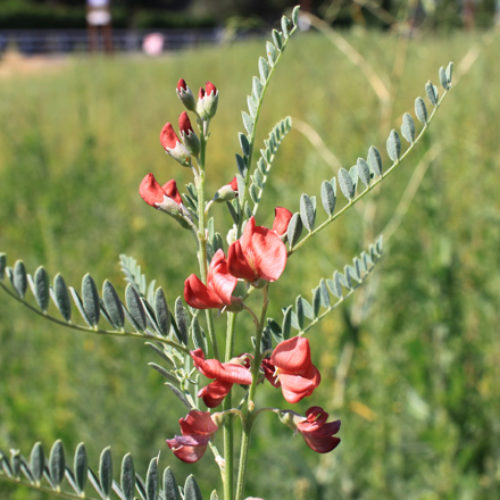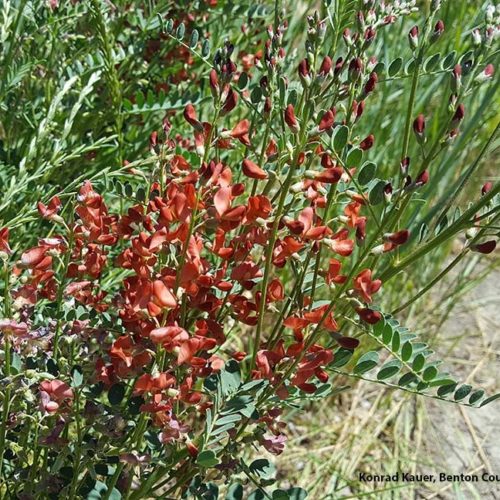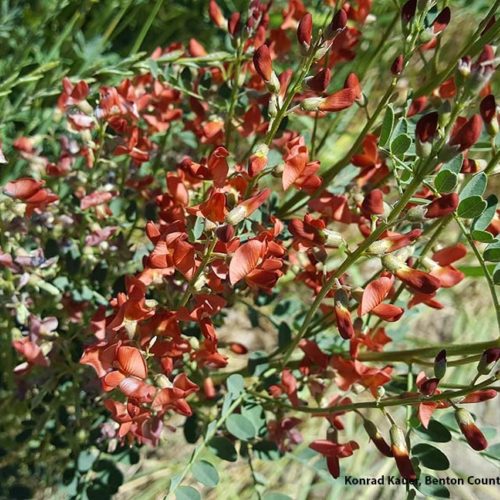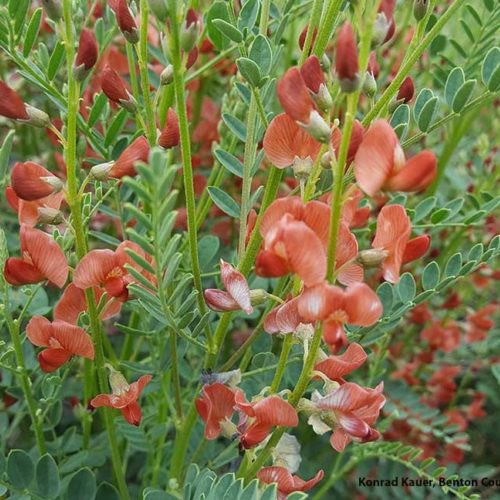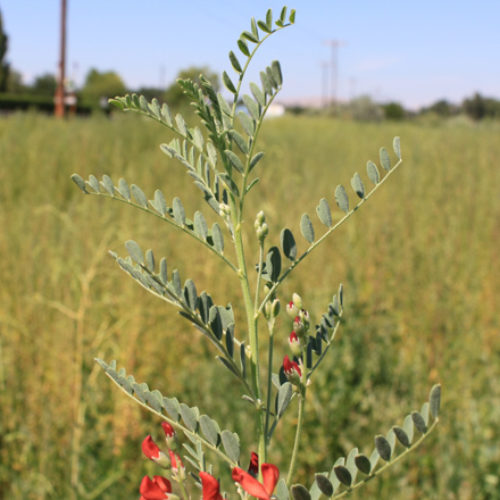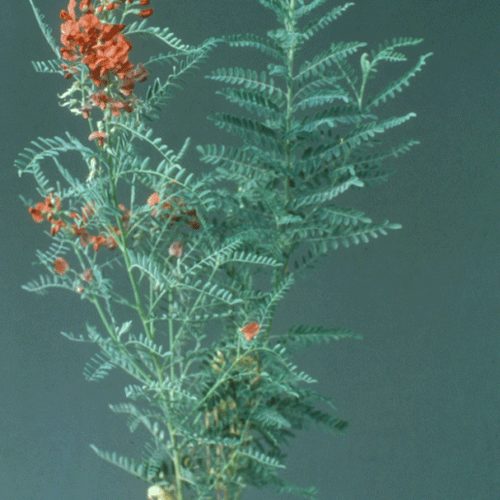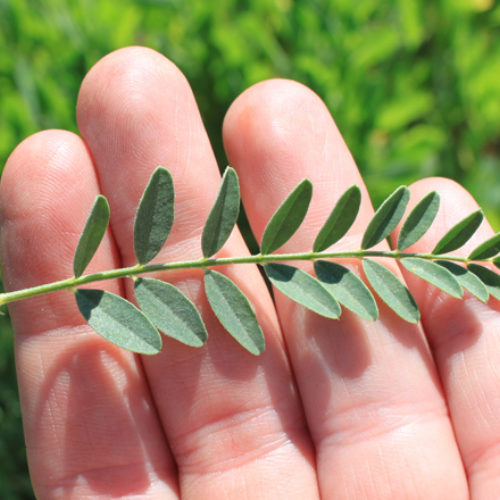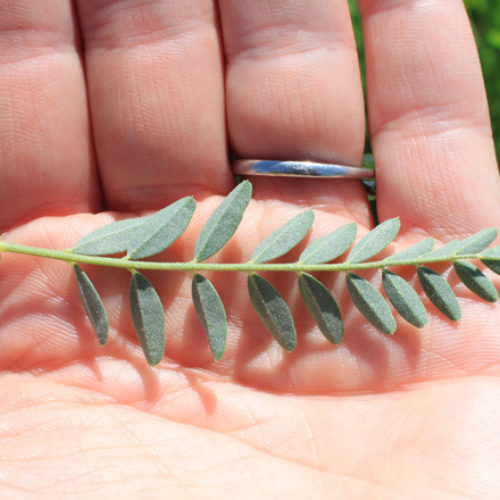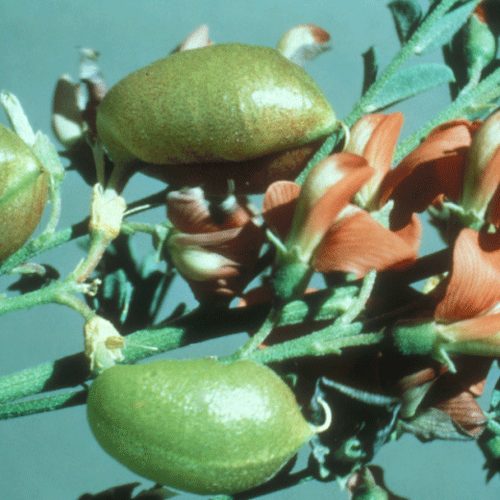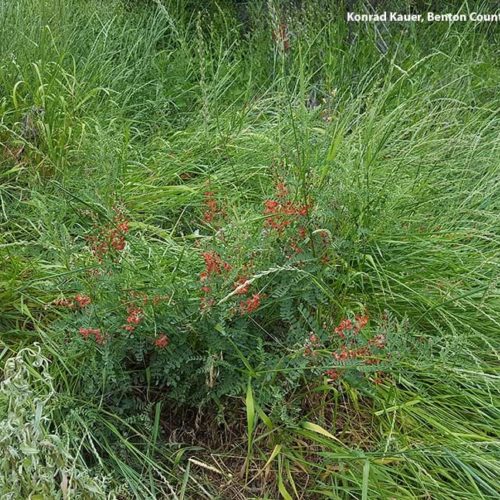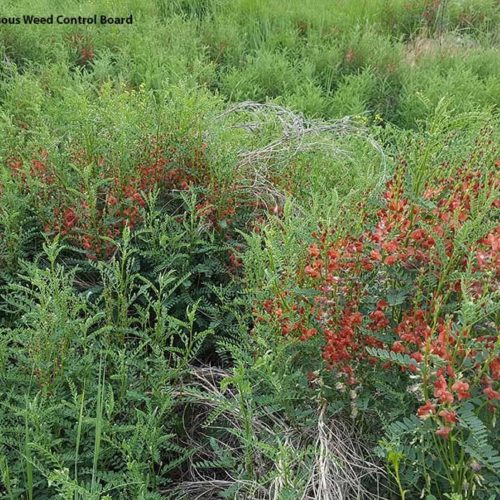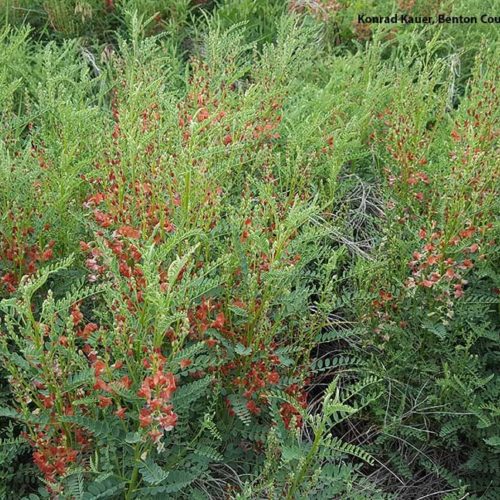Swainsonpea
Sphaerophysa salsula
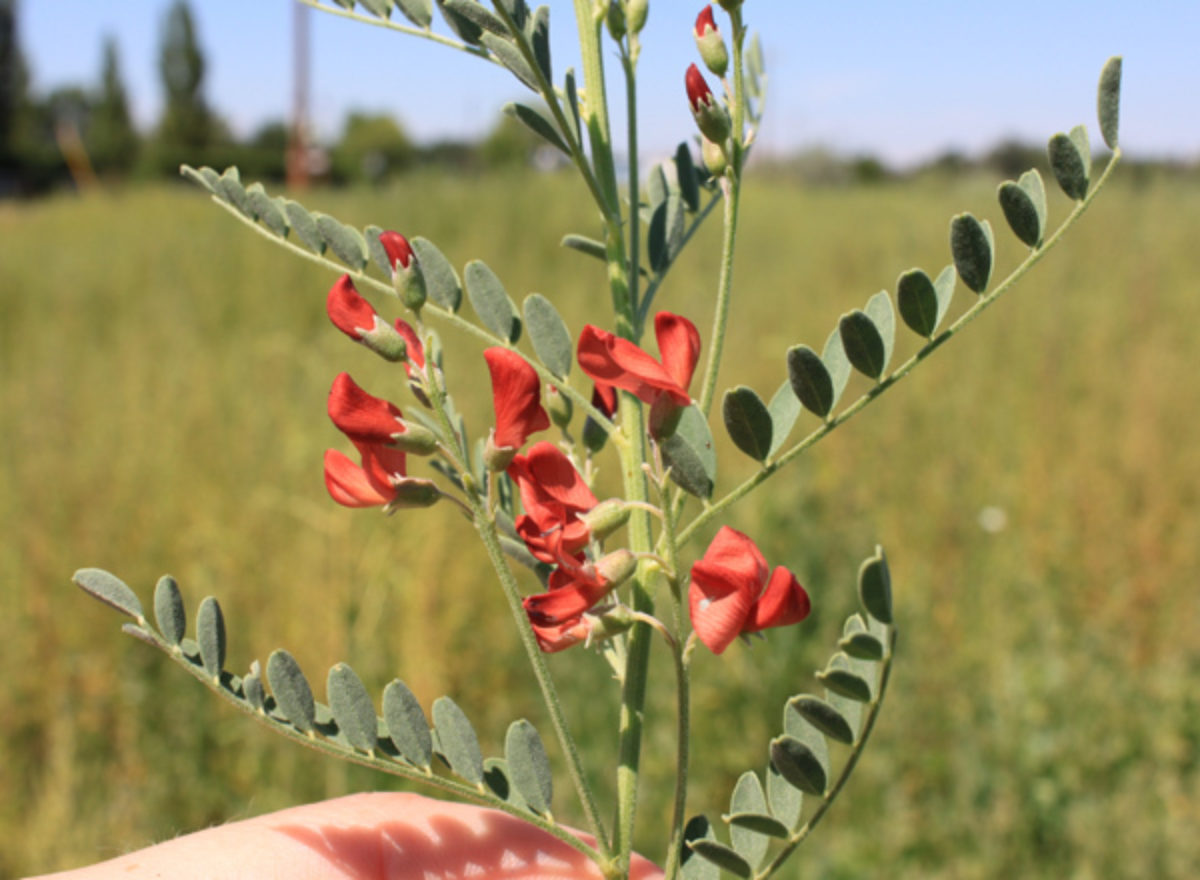
Family: Fabaceae
Other Common Names: Austrian peaweed
Weed class: C
Year Listed: 1988
Native to: Asia
Is this Weed Toxic?:
not known to be
Why Is It a Noxious Weed?
Swainsonpea poses a serious threat to areas where grain is grown. Since Swainsonpea seeds are the size of alfalfa seeds, it can be a serious contaminant in alfalfa grown for seed. It is known as a troublesome and persistent weed. Swainsonpea was changed from a Class B to a Class C noxious weed in 2013.
How would I identify it?
General Description
Swainsonpea is a perennial plant, much branched from the base with a woody taproot and rhizome.
Flower Description
Flowers are brick red to purple, pea shaped and occur in 5 to 12 flowered axillary racemes.
Leaf description
Leaves are alternate on the stem and pinnately compound, with each leaf having 9 to 25 leaflets with silvery hairs.
Stem description
Stems are single or multiple from base.
Fruit Seed Description
Seed pods (legumes) membranous and inflated 0.6 inches to 1.2 inches long by 0.4 inches to 0.6 inches wide, containing many seeds.
Where does it grow?
Swainsonpea is found growing along roadsides, waste areas, fence rows and in cropland. Please click here to see a county level distribution map of Swainsonpea in Washington.
How Does it Reproduce?
Swainsonpea reproduces by seeds and rhizomes.
How Do I Control It?
Herbicide Control
Please refer to the PNW Weed Management Handbook, or contact your county noxious weed coordinator.
For More Information
See our Written Findings for more information about Swainsonpea (Sphaerophysa salsula).
Report on Swainsonpea from the book "Weed Control in Natural Areas in the Western United States"



